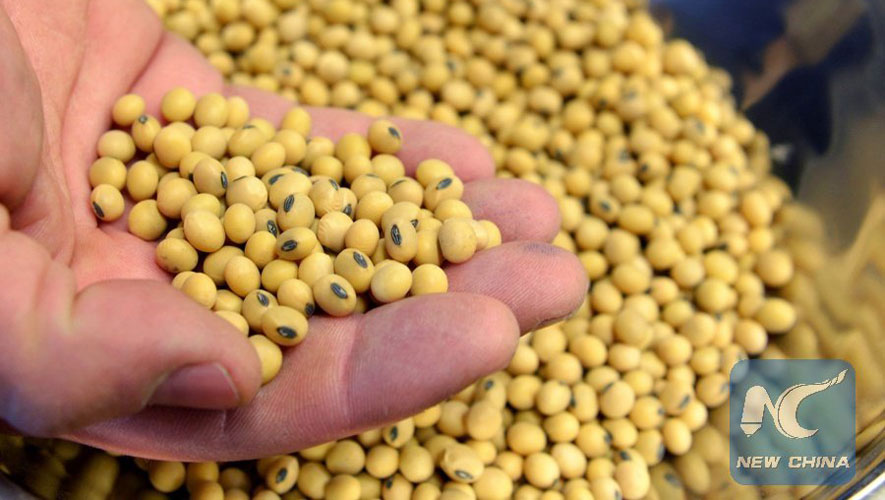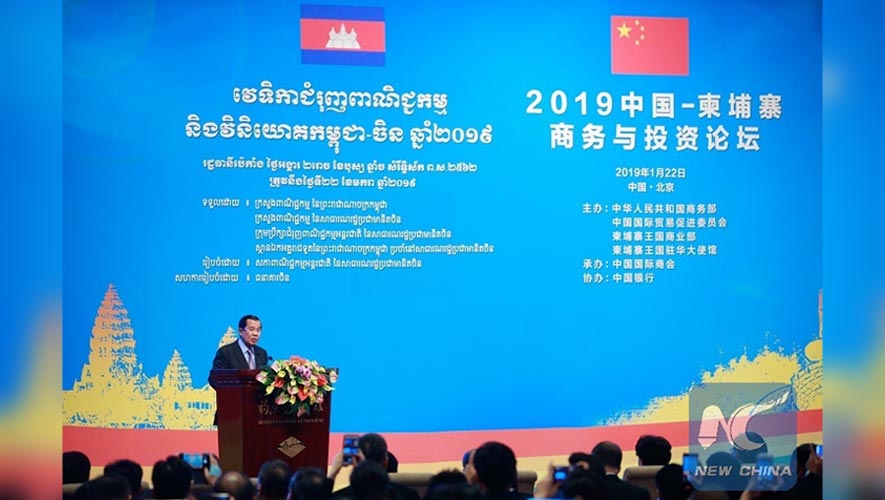The existing tariff on exports by companies in China to the US appears to be a permanent feature
For the latest Cambodian Business news, visit Khmer Times Business
The heavy presence of China is evident in the seaside town of Sihanoukville. The casinos in Sihanoukville is an attraction for the tourist from China.
An overwhelming attraction for investors from China is the Sihanoukville Special Economic Zone that is one of the beneficiaries from the US-China trade war. According to reports, one third of the companies operating from the Sihanoukville Special Economic Zone are from Zhejiang in China who have relocated to circumvent the trade war.
By manufacturing out of Sihaknouville, the goods become a product `Made in Cambodia’ instead of `Made in China’ and subject to less restrictions when exported to the US. From Vietnam to Indonesia and the Philippines, the governments are courting companies from China to relocate their manufacturing facilities to evade tariffs imposed by the US.
In Malaysia, the new government that is in power for almost a year now, has set its sights on enticing companies from China looking to relocate following the trade war. The general view is that the manufacturers from China targeting the markets in the US will not have it the same anymore.
Towards this end, Malaysian policy makers feel that the tariff on China products exported to the US will linger and be a permanent feature for years to come. A securities commission official in Thailand opines that the current 10 percent tariff on China’s exports to the US will be hard to dismantle even after the trade talks.
A lawmaker who is with the Ministry of Finance said there is more interest from China companies to relocate to Malaysia, especially in the area of solar panel manufacturing.After Vietnam and Cambodia, Malaysia and to some extent Indonesia are seen as the best possible places to relocate because of the fairly large Chinese communities in these countries. Thailand is another sought after destination but the uncertain political situation in that country is a setback.
The change in the view of the future of China’s manufacturing sector is a stark contrast to the overall mood early this year.
In January, there was optimism that the US and China would resolve their trade dispute amicably before March 1. This came after the leaders of both countries agreed to sit down and talk terms to resolve the trade disputes.
However, the latest developments, where the deadline has been pushed to another month, suggests that the final round of talks could be tough going and existing tariffs will continue to stay for most of China’s products to the US.
The US has already slapped a 10 percent tariff on imports from China last year. It has threatened to increase it to 25 percent on $200 billion worth of China’s exports if there is no agreement on trade talks between the two countries to reduce the trade imbalances that is heavily in favour of China.
China in retaliation imposed tariff on $110 billion worth of products from the US. It included soybeans and grains, which is hurting farmers in the US, who incidentally are strong supporters of President Donald Trump.
Sticky points on the trade talks are the existing tariff on China’s goods, purchases of goods from the US by China and a reduction of subsidies and concessions extended by the Chinese government to its companies. The US also wants China to commit to protecting the intellectual property rights of its technology.
Trump who needs China to ease on its tariffs imposed on agriculture products from the US, has toned down on his stance, expressing optimism an amicable deal can be struck. However, the characteristics of the key personalities in the trade talks strikes a discord from the President’s tone.
US Trade Representative, Robert Lighthizer staunchly believes that a deal with China should not be too focussed on taking care of the interest of the soybean farmers in the US. Effectively, his position is that not much concessions should be given to China, especially with regards to the tariff if the trade imbalance issue is to be addressed.
Lighthizer and Treasury secretary Steven Mnuchin are to meet China’s vice premier Liu He, in the next two weeks with a view of finalising details for the trade deal between the two countries.
Notwithstanding the trade talks, companies from China are already beginning to accept the fact that it will never be the same again. According to reports, so far they have been able to absorb the 10 percent tariff. However, if the tariff goes up further, many would have to close shop or relocate.
Economic data suggests that China’s manufacturing sector is feeling the heat from the trade war. China’s factory output, an indicator of the health of the manufacturing sector, grew at the slowest pace of 5.3 percent for the months of January and February compared to a year ago.
In December, the year-on-year growth of factory output was 5.7 percent. The slowing growth of the factory output is a precursor to the country’s slowing economy. The second largest economy in the world is expected to grow at a band of between six percent and 6.5 percent this year. The forecast is a change from the past when the country firmly sets its economic growth with a hard number instead of tagging it between a band.
China’s premier Li Keqiang when announcing the forecasted economic growth earlier this month, blamed the uncertainty on the tough external environment. The tough external environment that China faces is unlikely to change, even after the trade talks. It is likely to remain and extend to beyond simple transaction of goods and services to areas such as technology.
A recent survey that attracted more than 200 China manufacturers revealed that almost 10 percent of respondents feel that the effects of the trade, especially with regards to the 10 percent tariff, is here to stay. About 60 percent feel it would be resolved in a year’s time.
Meanwhile, the bigger manufacturers, who make up some 40 percent of China’s manufacturing sector, are already relocating to other countries without waiting for the outcome of the trade talks.
This only spells good news for the South East Asian countries.
M. Shanmugam is a financial journalist in Malaysia since the 1990s
Contributing Writer, Capital Cambodia




